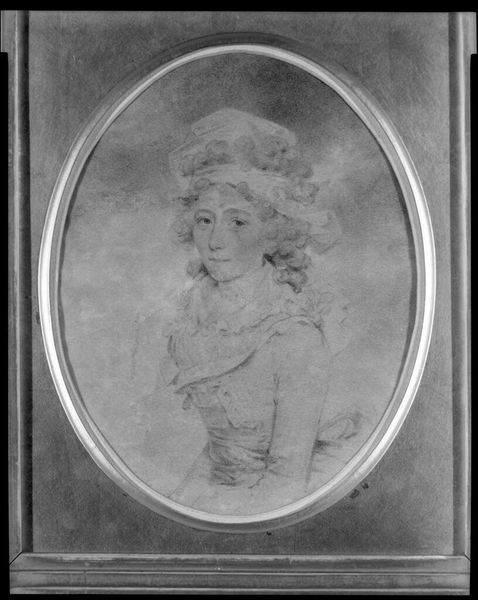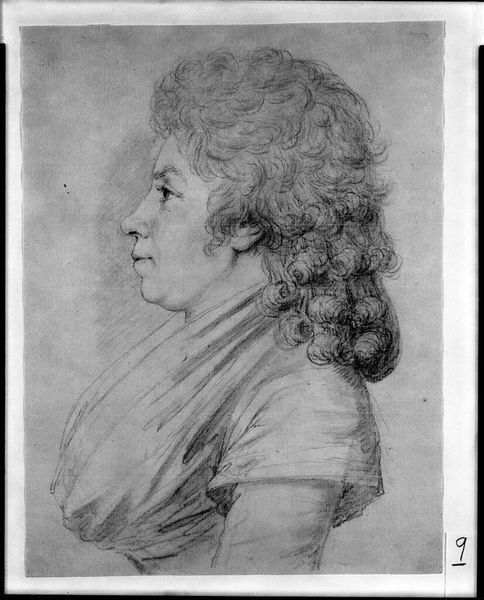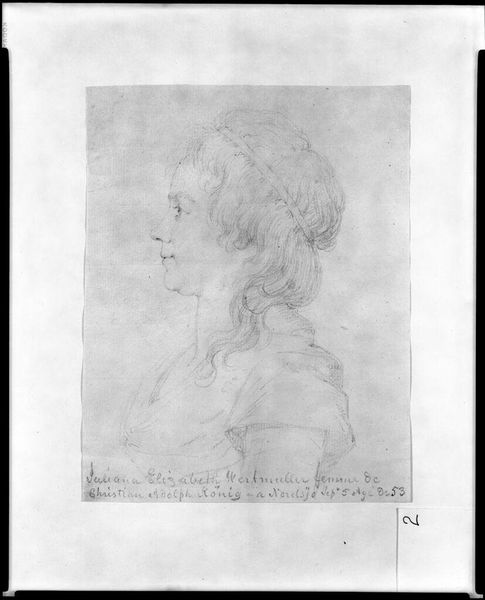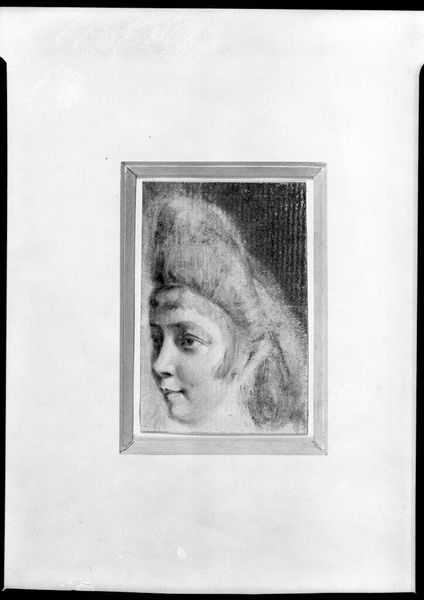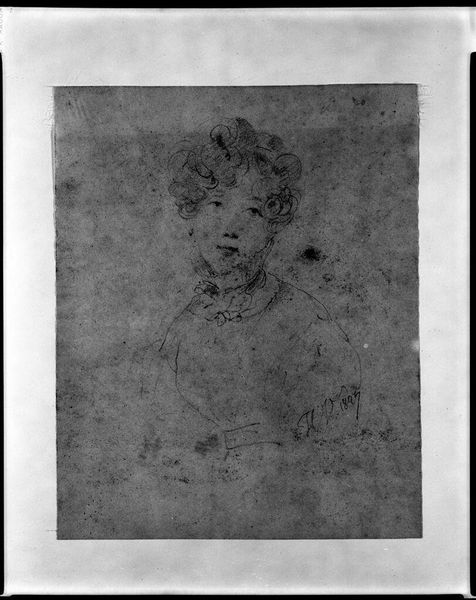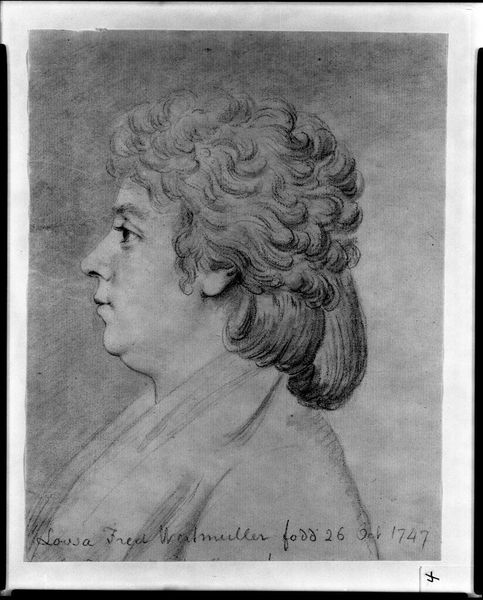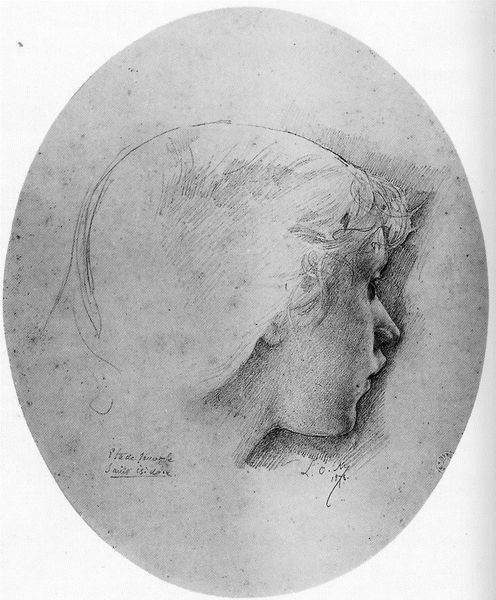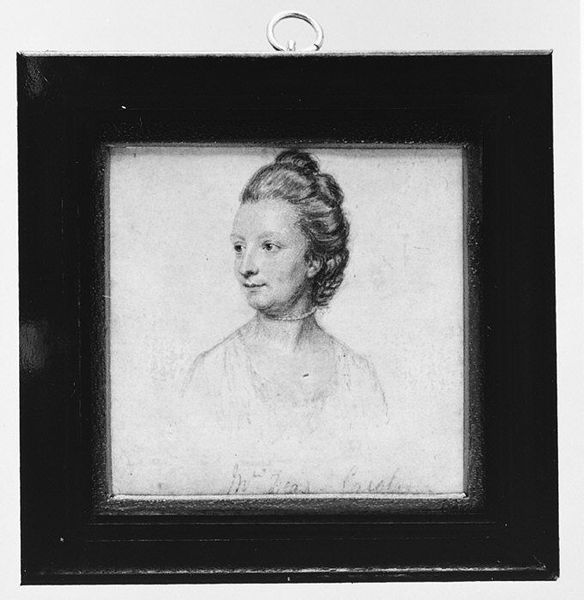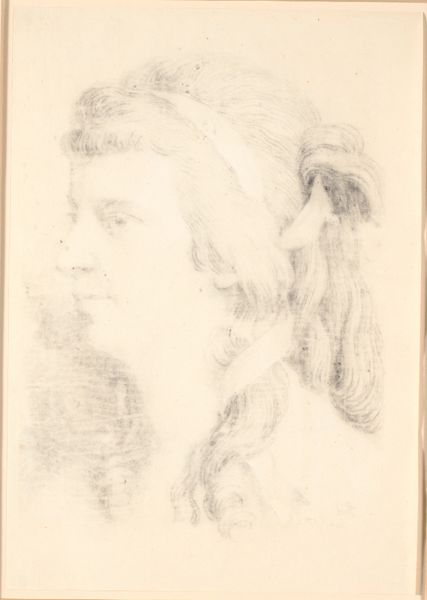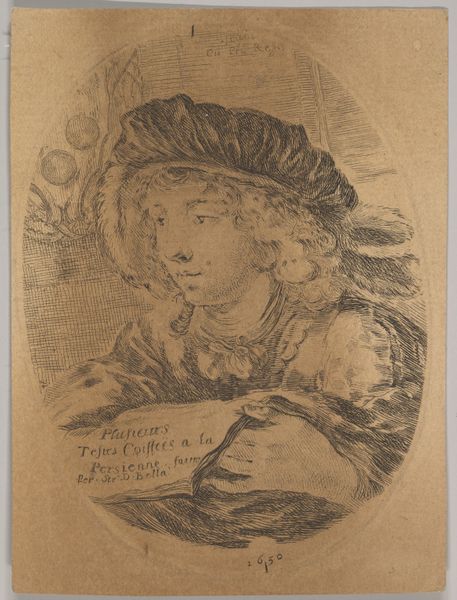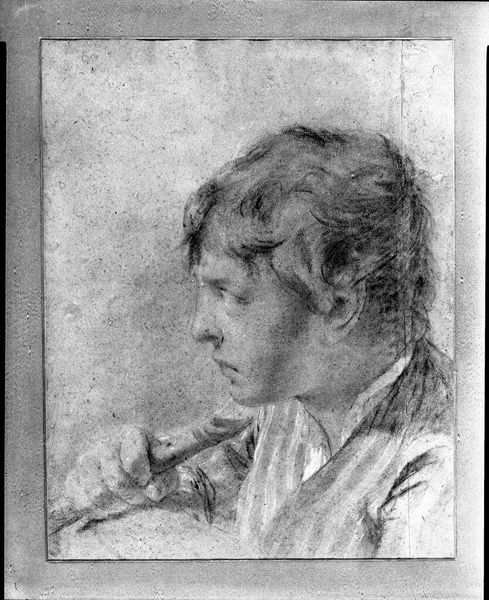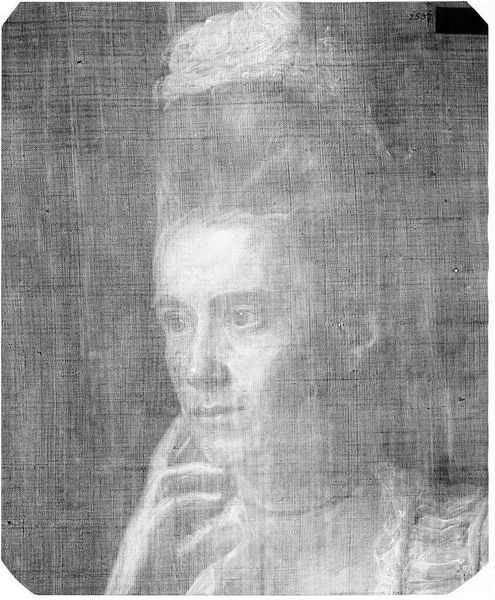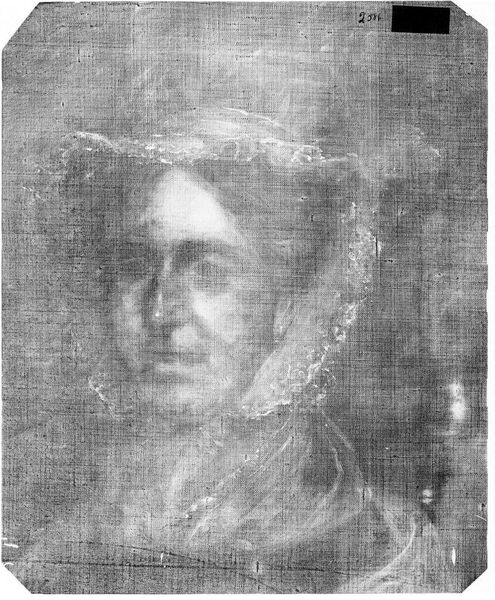
Mrs. George Clinton (Cornelia Tappen) 1794 - 1797
0:00
0:00
drawing, charcoal
#
portrait
#
drawing
#
charcoal drawing
#
charcoal
#
academic-art
#
charcoal
#
profile
Dimensions: 21 3/8 x 13 3/4 in. (54.3 x 34.9 cm)
Copyright: Public Domain
Curator: Thomas Bluget De Valdenuit created this charcoal drawing of Mrs. George Clinton, Cornelia Tappen, sometime between 1794 and 1797. It's currently held at the Metropolitan Museum of Art. Editor: My initial impression is one of subdued elegance, almost melancholy. The profile view, rendered in charcoal, has a striking delicacy, but that hat—it feels slightly overwhelming. Curator: Let's consider the materials: Charcoal, so easily smudged, yet capable of such precise detail. De Valdenuit's choice speaks to the economics of portraiture at the time. It was a less expensive alternative to painting. Editor: I’m intrigued by the iconography of the headwear. The elaborate folds and ribbons might represent status, perhaps marital status, but it also suggests a kind of social performance. There is certainly some hidden language here. Curator: I'm interested in your take on the hat as "performance." Beyond being fashionable and denoting her position in society, such details are directly tied to industry. The fabric itself, the craftsmanship – each fold represents hours of labour, trade routes, the global economy trickling down to this woman’s head. Editor: Absolutely. And consider the profile itself. In ancient Roman portraiture, the profile often denoted authority and stoicism. The artist knew how to use visual shorthand for emotional impact. Mrs. Clinton appears poised, reserved. The slight downturn of her mouth hints at something deeper, doesn't it? Curator: It is compelling, and to push that a bit more, there's also a fragility in the charcoal medium itself. It can flake away easily, reminding us of the ephemeral nature of both material wealth and the lives of these women. We only see what someone thought was important at the time of its making. Editor: That fragility underscores the poignancy. Art becomes a powerful vessel, capturing fleeting moments and preserving symbols for posterity. De Valdenuit gives her immortality and a weightier statement on female roles in a changing America. Curator: Looking at the physical process further helps in humanizing figures in historical art; understanding what means and labour went into such commissions provides a window into societal conditions, going beyond simply depicting the final result. Editor: Ultimately, whether viewed through material analysis or symbolic reading, the portrait of Cornelia Tappen speaks volumes. It reflects an era and embodies the personal identity it once housed, if fleetingly, centuries ago.
Comments
No comments
Be the first to comment and join the conversation on the ultimate creative platform.
